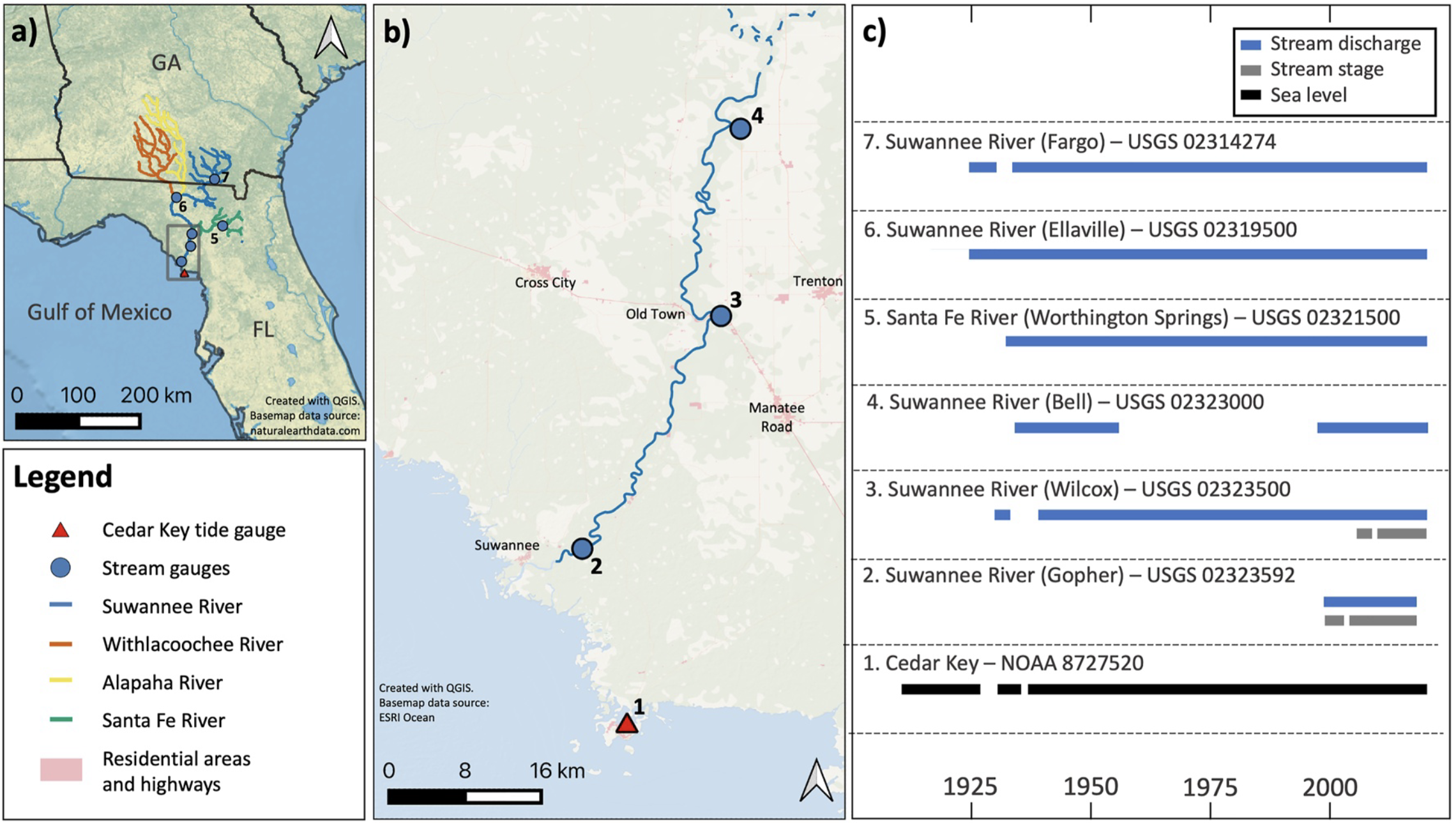
TIMMERS, SERAFIN – A Hybrid Framework for Rapidly Locating Transition Zones: A Comparison of Event- and Response-Based Return Water Levels in the Suwannee River FL
R. A. Jane, V. Malagón-Santos, M. M. Rashid, L. Doebele, T. Wahl, S. R. Timmers, K. A. Serafin, L. Schmied, C. Lindemer
Article first published online: 15 November 2022
DOI: https://doi.org/10.1029/2022WR032481
ABSTRACT: Flood risk assessments commonly use event-based approaches to reduce the number of scenarios required to be run through computationally intensive physical process models. Often the return period of the response variable (e.g., a fluvial water level or overtopping discharge) generated by an event (e.g., upstream/downstream water level or set of sea state variables) does not match that of the event itself; a limitation of event-based approaches which can lead to the misspecification of flood risk. We present a transferable hybrid statistical-hydraulic modeling framework for rapidly locating transition zones; river reaches where extreme water levels are driven by both upstream riverine discharge and downstream sea level. Instead of an event-based approach the framework utilizes a surrogate model to reduce computational expense of the hydraulic model. The surrogate-based approach allows the empirical estimation of response-based along-river return levels from a large number of plausible discharge–coastal still water level events simulated from the statistical model. We assess the robustness of the event-based approach by comparing the associated return levels with the response-based return levels. The framework is applied to the Suwannee River in Florida (United States). Three surrogate models are evaluated, highlighting the enhanced ability of non-linear models to accurately capture discharge-sea level interactions along the river. The along-river return levels of the “most-likely” design event are found to lie within the range of variability of the response-based return levels for most of the transition zone.
Read the full publication at Water Resources Research